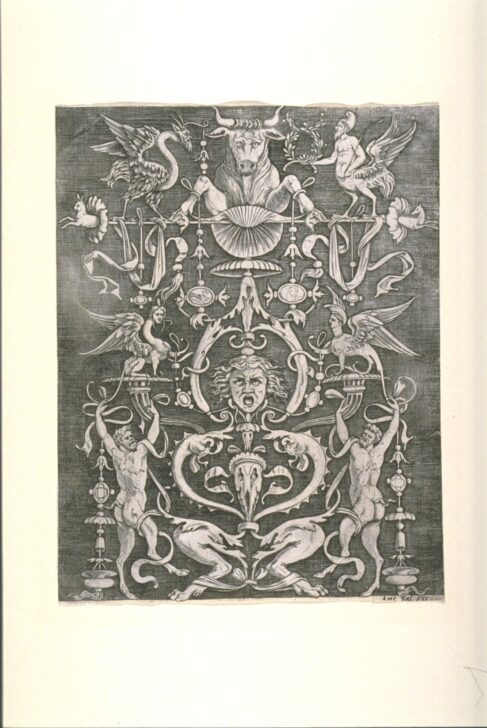Upright Ornament with Bull and Satyrs
Agostino dei Musi

Description
Gallery Rotation Spring/Summer 2012
Agostino Musi
Italy, active 1514–1536
Upright Ornament with Bull and Satyrs
circa 1520
Engraving
Museum purchase, 1960/2.133
Grotesque ornamental schemes were not fully developed mythological narratives, but they were populated with satyrs, sphinxes, sirens, and other fantastical beings taken from classical myth. Here, the focus is satyrs, part-human, part-animal creatures that were attendants of Bacchus (Dionysus), the god of wine, theater, and ecstasy. Satyrs usually have pointed ears, tiny horns, and goat-like lower bodies with hooves instead of feet. Like Faunus (Pan), the god of the wild, satyrs were spirits of the wild life, inhabitants of the woods known for their love of music and revelry. They were also considered symbols of fertility and in the Renaissance became associated with unbridled lust. At the top of the composition is a bull, a common symbol of virility and fecundity in ancient mythology.
Subject Matter:
The imagery in this grotesque include references to Bacchus, as well as objects that suggest fertility and virility such as the bull and rabbit. Such works including fantastical creatures were imaginative decorative works ultimately derived from a 16th century understanding of recently discovered Roman painting.
Physical Description:
This decorative image is organized along a vertical axis wtih fanciful creatures, grotesque heads, depictions of carved gems and harpies.
Usage Rights:
If you are interested in using an image for a publication, please visit https://umma.umich.edu/request-image/ for more information and to fill out the online Image Rights and Reproductions Request Form.